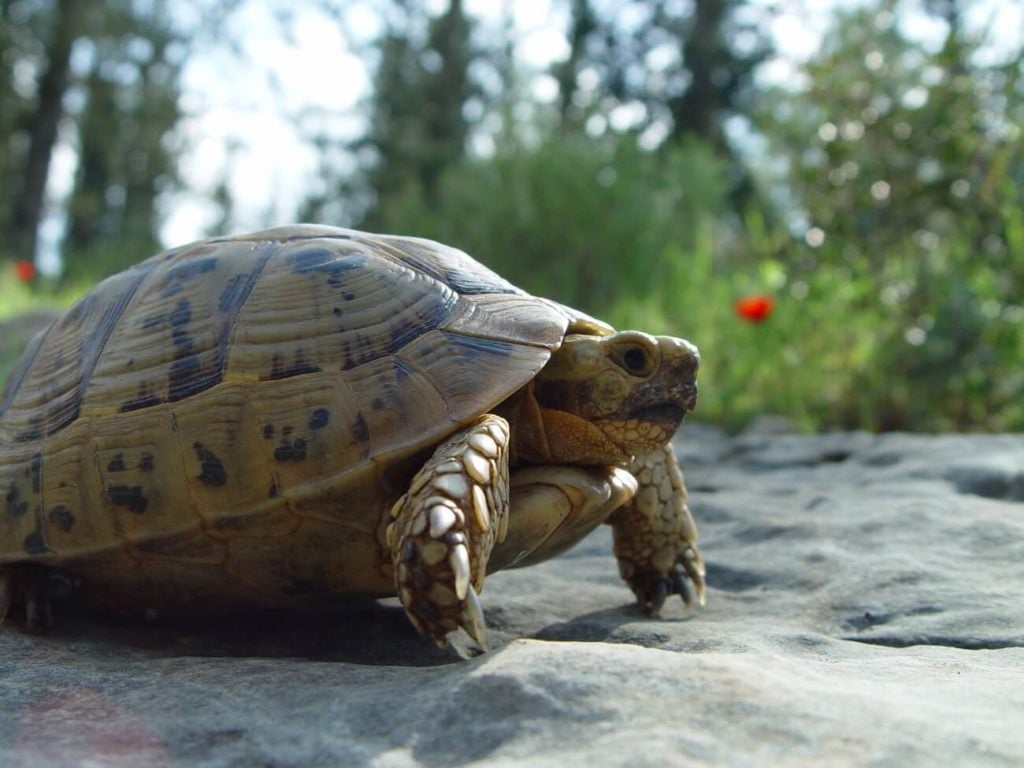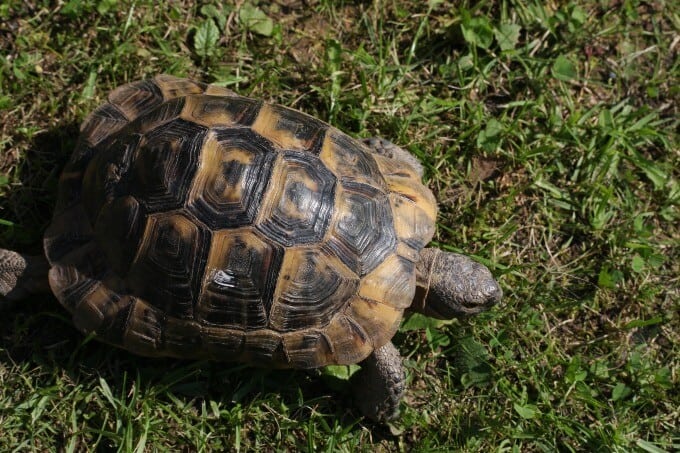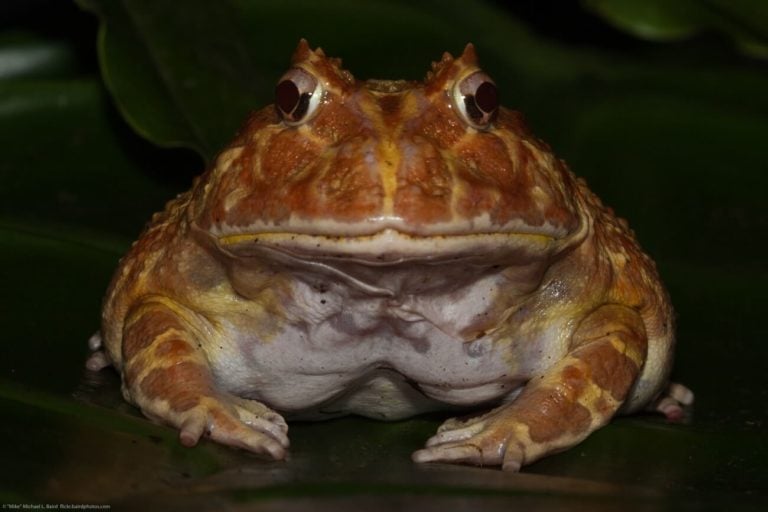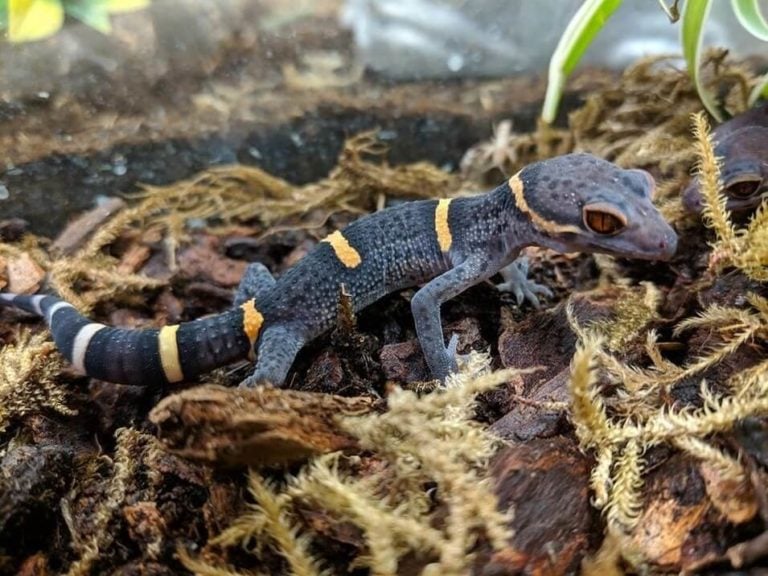The Greek tortoise is a fantastic pet reptile that has recently seen a surge in popularity. Their cute nature, straightforward care requirements, and reasonable size makes them a great choice for many people!
But even though these tortoises look low-maintenance, it’s still important for you to be a prepared and knowledgeable owner.
In this guide we dig into all the details you’ll need to know about Greek tortoise care. You’ll learn about their food list, habitat, size, lifespan, and much more!
Table of Contents
Species Summary
The Greek tortoise (Testudo graeca) is a friendly reptile with a lax personality and friendly demeanor. Thanks to their beautiful shells and easygoing nature, these tortoises have become quite popular in the pet trade.
In the wild, these tortoises inhabit several areas around the Mediterranea and the Black Sea. They’re found in Southern Europe, Southwest Asia, and Northern Europe. Curiously enough, the Greek tortoise doesn’t have a single preference when it comes to habitat.

You can find these tortoises dwelling in environments ranging from rocky hillsides to lush meadows. The only real preference they have is an arid climate.
Because of their wide distribution and undemanding habitat needs, these tortoises do well in captivity. As long as you’re covering their basic needs, they can thrive in a man-made environment.
Lifespan
Before you get a Greek tortoise, make sure that you’re ready for a commitment. These are one of the longest living tortoise species on the planet. This is especially true when kept in captivity.
The typical pet Greek tortoise lifespan is around 50 years! But that’s not the limit. These reptiles are fully capable of living upwards of 125 years.
Some reports have even claimed that they can live up to 200 years. However, those claims are not verified.
Expert Tip: These reptiles typically live longer in captivity than they do in the wild (which is not the case with many animals). In the wild, many don’t live beyond 20 years due to predators.
Because of this impressive lifespan, these tortoises are often lifelong pets. Of course, there are no guarantees. A tortoise can only reach a ripe old age if it receives pristine care. Poor living conditions and a lackluster diet could lead to premature death.
Average Greek Tortoise Size
The average Greek tortoise size is between 5 or 8 inches as a fully grown adult. In some instances they can reach 11 inches, but you shouldn’t expect this.
These tortoises are very manageable when it comes to size. They’re not enormous like other species with a long life expectancy. This makes them a very approachable pet tortoise when it comes to their habitat setup (more on that later).
Appearance & Colors
Green Tortoises are beautiful creatures with eye-catching shells. The carapace can range in color from yellow gold to tan. The individual scutes also incorporate hues of black and brown.
The scutes take on an interesting design that looks like a work of art. Contrary to popular belief, the Greek tortoise isn’t named after the country. Instead, it’s named after Greek mosaics, which look a lot like the turtle’s shell!
Overall, the shell is tall and rectangular-shaped. It has a pretty steep curve, which is common in many tortoise species.

The legs and head of the body are covered in thick scales. The scales are biggest around the legs, which also have sharp claws for digging into the soil. Meanwhile, the head is round and blunt. The species is also identifiable for the symmetrical markings on the head.
Greek tortoises are sometimes referred to as Spur-Thighed Tortoises. That’s because they have raised, pointy scales on both sides of the scales and their inner thighs.
Expert Tip: There are a few noteworthy differences between males and females. Generally, males are smaller and have a longer tail. They often have a wider shape towards the rear of the shell with plates that flange outward.
Greek Tortoise Care
Greek tortoise care can be both simple and time consuming. While their care requirements aren’t particularly difficult or challenging, you will need to spend a bit of time setting everything up (and maintaining it).
It’s crucial for you to establish a suitable environment, plan a balanced diet, and take care of any health issues that pop up.
Below are some established care guidelines for you to follow throughout the ownership process.
Enclosure Size
While they may be small, Greek tortoises don’t do well in standard glass terrariums. They can get the job done, but these reptiles prefer larger habitats built out of wood.
Wood will block their view, which can teach the tortoise its boundaries and limit escape attempts.
The main priority for the enclosure is floor space.
For a single tortoise or bonded pair, the enclosure should measure at least six feet long by three feet tall. As for height, you only need about 18 inches.
This is the bare minimum when it comes to enclosure size. Bigger is always better! A larger enclosure will prevent stress and potential aggression.
Expert Tip: You can also build an outdoor enclosure of the same size if you live in an area with warmer climates. However, you must make the habitat predator-proof by installing a screened top. The walls should extend six inches below the surface of the soil as well (to prevent digging).
Habitat Setup Recommendations
The habitat you put together can be relatively simple compared to other reptiles. Greek tortoises don’t need a lot to stay happy.
At the bottom of the enclosure, use a suitable substrate material. Cypress mulch, aspen shavings, or other reptile-safe mulch products work well. You can also use a 50/50 mix of play sand and topsoil.
For some enrichment, you can add plants. Use edible plants with plenty of leaves. Chances are, the tortoise will eat them, so don’t use rare or hard-to-grow plants that you don’t want to be ruined.
A hide box is necessary as well. You can use one made out of molded plastic or wood. Overturned half-logs or hollow rocks work well, too.
Greek tortoises aren’t big climbers like other species, but you should limit bulky decor that they could use to escape. Keep the habitat open to give the tortoise plenty of room to roam.
Temperature & Lighting
Creating the right temperature gradient and lighting arrangement is essential. Like most reptiles, Greek tortoises will regulate their body heat by moving to different parts of the environment.
Ambient temperatures can be anywhere between 75 and 90 degrees Fahrenheit. If you plan on keeping your tortoise outside, the temperature should not dip below 65 degrees Fahrenheit at night.
Using a basking lamp, raise the temperature in one corner of the habitat to roughly 100 degrees Fahrenheit.
Keep the lights on throughout the day. These tortoises require a full day and night cycle to stay healthy.
Expert Tip: In addition to your standard lights, you’ll need a UVB lamp if your tortoise is being kept indoors. A UVB lamp simulates UV rays from the sun, which is necessary for the turtle’s skeletal health.
The UVB lamp should cover the entire enclosure and follow the same schedule as your normal lights.
Humidity
One of the most important tools you can get for monitoring their habitat is a hygrometer. The hygrometer will check humidity levels in the air, giving you the information you need to make adjustments and avoid health issues.
Greek tortoises prefer moderate humidity levels between 40 percent and 60 percent. Young hatchlings need even more moisture in the air. They require 65 to 75 percent.
Check the humidity levels daily. If they get a little too low, just use a mister to spray the substrate!
Water
It’s necessary to provide a large, shallow water dish for your Greek tortoise. The tortoise will use the water dish in a few different ways. They may drink from it directly, bath in it to cool off, or defecate in it.
Whatever the case may be, make sure to check on it throughout the day. Cleaning the dish out regularly prevents bacterial issues and makes sure that your tortoise always has access to clean water.
Food List & Diet
Greek tortoises are natural herbivores that do best on a diet that’s high in fiber and low in protein.
We mentioned earlier that you can add some plants to the enclosure. If you decide to do that, stick with edible weeds and leafy plants that the tortoise would eat normally.

They love plants like dandelion, parsley, clover, thistle, wild strawberry, and more. This means when you’re creating their meals, you can add those plants into the mix fairly liberally.
You should also incorporate leafy greens like lettuce, mustard, endive, and kale. The tortoises enjoy vegetables like carrots, zucchini, and broccoli, too.
For an added boost of fiber, you can sprinkle in some Timothy hay. The occasion fruit snack is appreciated as well, but fruits should only make up about 10 percent of the diet.
Commercial pellet products are available options to consider too. These are easy-to-feed foods that contain a healthy source of nutrients. You can alternate between pellet meals and fresh meals to keep things interesting.
Consult with your vet about supplements and meal sizes. Usually, daily feedings are recommended. However, these tortoises are prone to weight gain. A vet will be able to guide you in the right direction based on your tortoise’s health.
Potential Health Issues
The good news is that Greek tortoises aren’t prone to any special diseases. The bad news is that they can still suffer from many common reptile diseases. These include respiratory infections, shell rot, parasites, and metabolic bone disease.
Respiratory infections are common. They can make your tortoise feel lethargic. In severe cases, they might start wheezing or have mucus coming out of their nose. Typically, wrong humidity levels are to blame. Use your hygrometer to make corrections as soon as possible!
Shell rot is a disease brought on by fungus. It can attack the shell and lead to deformities. Have your vet take a look at the issue to seek proper treatment. This disease could be life-threatening, so address the problem as soon as possible.
Finally, there’s metabolic bone disease. This is a common ailment that’s caused by a lack of UVB exposure and calcium. Reptiles use UV rays to metabolize calcium. Without it, the bones become brittle and weak.
Tortoises are seriously affected by this disease because of their shell. Make sure that your UVB lamps are in good working conditions. You may also want to consider implementing calcium supplements into your tortoise’s diet.
Behavior & Temperament
Overall, Greek tortoises are very peaceful pets. The only time when you might see them exhibit some forms of aggression is when they’re in a cramped environment. However, aggression usually doesn’t amount to any serious injury.
As you might expect, these reptiles are also very mellow when it comes to their activity level. They’ll spend most of their day basking or nibbling on plants!
Expert Tip: Over time, they can actually develop strong relationships with their caretakers. They’re known to walk right up to humans when food is nearby!
Handling Them
One thing that Greek tortoises don’t like is handling. Being picked up is a stressful process that these tortoises would rather avoid.
If you must pick them up to clean their enclosure, do so slowly and gently. Move them to a temporary enclosure and limit handling as much as possible.
Greek tortoises can resort to biting if you handle them too much. It’s the only time that owners ever really see aggression from these animals.
As long as you keep handling to a minimum and respect their boundaries, you should have any issues.
Conclusion
Greek tortoise care is nothing to be afraid of. As long as you’re aware of their long lifespan and are willing to put in the time to keep them healthy, we’re confident that you’ll be able to help your pet reptile thrive.
If you have questions about anything that wasn’t covered in this care sheet you can always ask us! Hearing from our readers never gets old.


